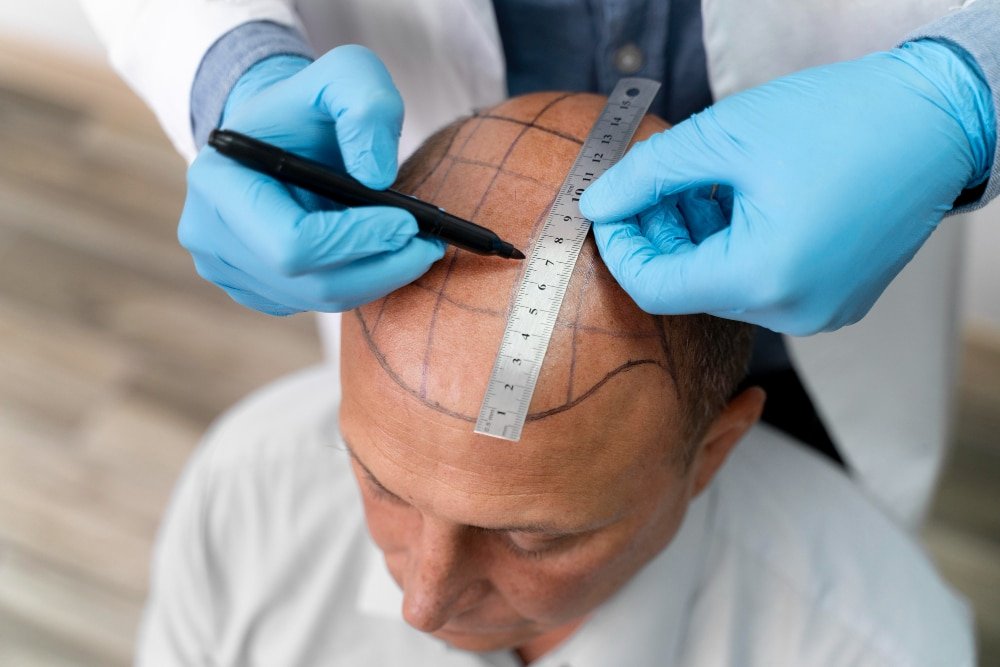
Hair loss is a phenomenon that affects men and women of all ages. Whether it is thinning areas, complete baldness or partial receding hairline, the impact on the individual’s psychology can be profound. Many patients report reduced self-confidence, avoidance of social situations, and even difficulties in their work or relationships. The good news is that medicine now has an effective and permanent solution in its hands: hair transplantation.
What is hair transplantation?
Hair transplantation is a non-invasive microsurgical procedure, in which hair follicles from areas of the scalp that are not affected by hair loss (usually the occipital region – the back of the head) are transferred to areas with thinning or complete loss.
The main advantage of this method is that the transplanted hair continues to grow normally and permanently, since it retains its “genetic memory”.
The main transplantation techniques
FUE (Follicular Unit Extraction):
The most modern method, where the hair follicles are extracted one by one and transferred to the recipient area. It leaves no linear scars, the recovery is fast (2-4 days) and no stitches are required.
FUT (Strip Method):
Traditional method where a thin strip of skin is removed from the donor area and the hair follicles are separated from it. It is suitable for longer sessions, but leaves a small scar.
The choice of technique is made following a medical evaluation, based on the type and extent of hair loss, the quality of available hair follicles, and the patient’s aesthetic goals.
Who is the ideal candidate for hair transplantation?
The success of a hair transplant does not only depend on the technique or the dermatologist, but also on the characteristics of the patient himself. Ideal candidates are those who have sufficient density and good quality of hair follicles in the donor area (usually at the back of the head). In terms of age, the best candidates are found in people after 25-30 years, when the course of hair loss has stabilized. Also, people who have realistic expectations and understand that the transplant improves, but does not exactly “replace” their original density, have the best results and the highest satisfaction. Finally, a necessary condition is that there are no active skin or systemic diseases that affect the result of the operation.
Frequently asked questions from patients
Does the procedure hurt?
The transplant is performed under local anesthesia. Most patients experience only mild discomfort for the first few days.
When are the results visible?
The first new hair appears in 3-4 months. The full result is visible in 10-12 months.
Is the result natural?
Absolutely. With the right distribution and placement angle, the result is undetectable.
Can the procedure be performed on women?
Yes. Although less common, female pattern hair loss is successfully treated when a suitable donor area is available.
Post-transplant care
Proper post-operative care is just as important as the procedure itself. It includes:
- Gently wash after 48 hours with a special shampoo
- Avoid exercise and sun for 10 days
- Avoid wearing hats and helmets for the first few days
- Systematic monitoring of the course by the doctor
The expert’s opinion
Hair transplantation is now more accessible, safe, and effective than ever. With the right technique, a dermatologist can restore not only hair – but also the patient’s self-confidence.




